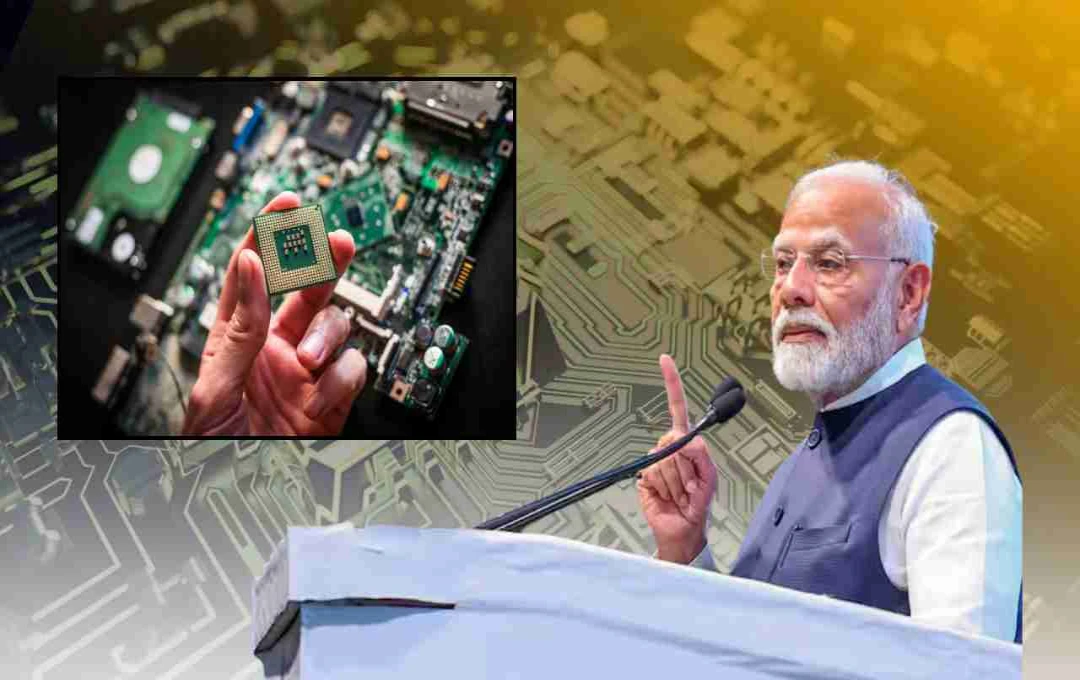The Indian government has significantly amended Special Economic Zone (SEZ) regulations to boost semiconductor and electronic device manufacturing. Companies can now establish factories on smaller plots, strengthening the ‘Make in India’ initiative.
Made in India: The Indian government has implemented crucial changes to Special Economic Zone (SEZ) regulations to bolster semiconductor and electronics production within the country. These new rules, specifically designed for semiconductor and electronic device manufacturers, allow for factory establishment on smaller plots. This initiative will significantly support the ‘Make in India’ campaign and further solidify India's position on the global electronics manufacturing map.
SEZ Regulation Changes: Significant Reduction in Land Requirements
Previously, semiconductor manufacturing companies required a minimum of 50 hectares of land. This threshold proved prohibitive for many emerging companies, particularly startups and SMEs unable to manage such large land parcels. The government has addressed this obstacle by revising regulations, reducing the minimum land requirement for the semiconductor industry to 10 hectares.
Beyond semiconductors, the minimum land requirement for multi-product SEZs has been reduced from 20 hectares to 4 hectares. This measure applies across various states and union territories, including Goa, Uttarakhand, Himachal Pradesh, Nagaland, Manipur, Mizoram, Arunachal Pradesh, Tripura, Meghalaya, Sikkim, Ladakh, Puducherry, Andaman and Nicobar, Lakshadweep, Daman and Diu, and Dadra and Nagar Haveli.
This change enables semiconductor factories on smaller plots, attracting investors and creating employment opportunities. It is particularly beneficial for small and medium-sized industries, eliminating concerns about extensive land requirements.

Relaxations and Facilitation for Electronic Device Production
The government has not only reduced land restrictions but also streamlined regulations for electronic device production. Items such as smartwatches, earbuds, display modules, batteries, camera modules, printed circuit boards (PCBs), mobile phones, and IT hardware components are now recognized as electronic components.
This move simplifies the permitting and licensing processes for these products, accelerating production and reducing costs. This will increase the production of these high-tech products in India and reduce reliance on foreign imports.
New Relaxations in Goods Storage and Sales
Companies now enjoy greater freedom regarding goods storage and sales. They can store their production materials within India and either export directly or sell domestically after paying taxes. This facilitates supply chain strengthening and simplifies business processes.
India's Future in the Semiconductor Industry
Industry experts estimate India's semiconductor market at approximately $45 billion currently, projected to exceed $100 billion by 2030. This growth is driven by the increasing demand for smartphones, laptops, electric vehicles, medical equipment, and defense equipment. Amidst global supply chain uncertainties and geopolitical tensions, encouraging semiconductor production in India has become crucial for national security and economic self-reliance.
Make in India Takes Flight
This central government initiative marks a significant milestone in realizing the ‘Make in India’ vision. It will boost foreign investor confidence and provide domestic companies with opportunities to expand production capacity. Permitting factories on smaller plots will stimulate industrial development in states and create employment opportunities in rural areas. Furthermore, it will foster technological skill development, leading to future innovation and increased production capacity.













